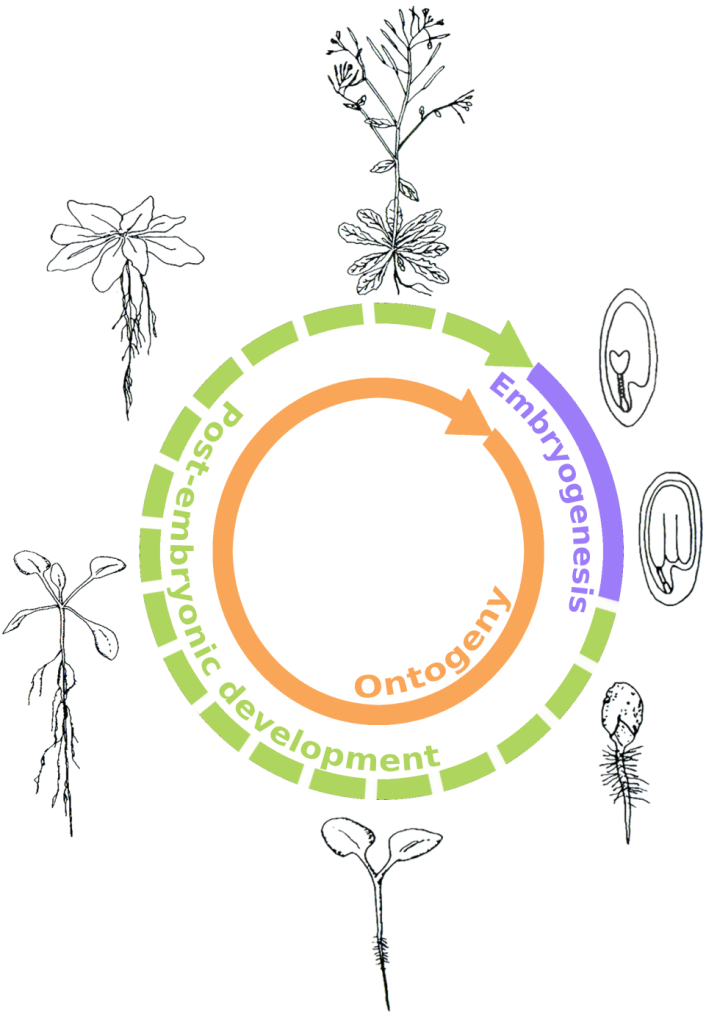
Embryogenesis coordinates the transformation of a single fertilized egg cell into a differentiated, complex organism. Based on von Baer’s third law of embryology (1828), it has been observed that embryos of animal species from the same phylum share a developmental stage with apparent morphological similarities. Animal embryos from the same phylum often appear morphologically different in early embryogenesis, converge to a similar form during mid embryogenesis, and diverge again in late embryogenesis. This morphological pattern is known as the developmental hourglass pattern (Duboule, 1994; Raff, 1996), and the stage or period of maximum morphological conservation in mid embryogenesis is called phylotypic stage (Sander, 1983) or phylotypic period (Richardson, 1995).
Recently, several groups succeeded in providing a possible explanation for the morphological hourglass pattern in animals by observing an hourglass pattern also at the transcriptome level. Distance-based comparisons of transcriptomes of related species (Kalinka et al., 2010; Irie and Kuratani, 2011; Levin et al., 2012) or transcriptome indices based on the combination of evolutionary with transcriptomic information (= phylotranscriptomics) of a single species (Domazet-Lošo and Tautz, 2010) revealed the existence of a phylotranscriptomic hourglass pattern in different animal lineages. Although embryogenesis plays a similarly essential role in plant development, the whole concept had apparently never been addressed in plants. We were therefore interested to investigate the developmental hourglass model in the plant kingdom. In collaboration with Ivo Grosse‘s bioinformatics group at the MLU Halle we performed phylotranscriptomic analyses of Arabidopsis thaliana embryogenesis and, to our surprise, observed a ‘perfect’ hourglass shaped phylotranscriptomic pattern (Quint et al., Nature, 2012; Drost et al., 2015, Mol Biol Evol). We are currently investigating the hourglass phenomenon in post-embryonic developmental processes and believe that our findings in the plant lineage will enable us to better understand this historic enigma in both animal and plant kingdoms.
